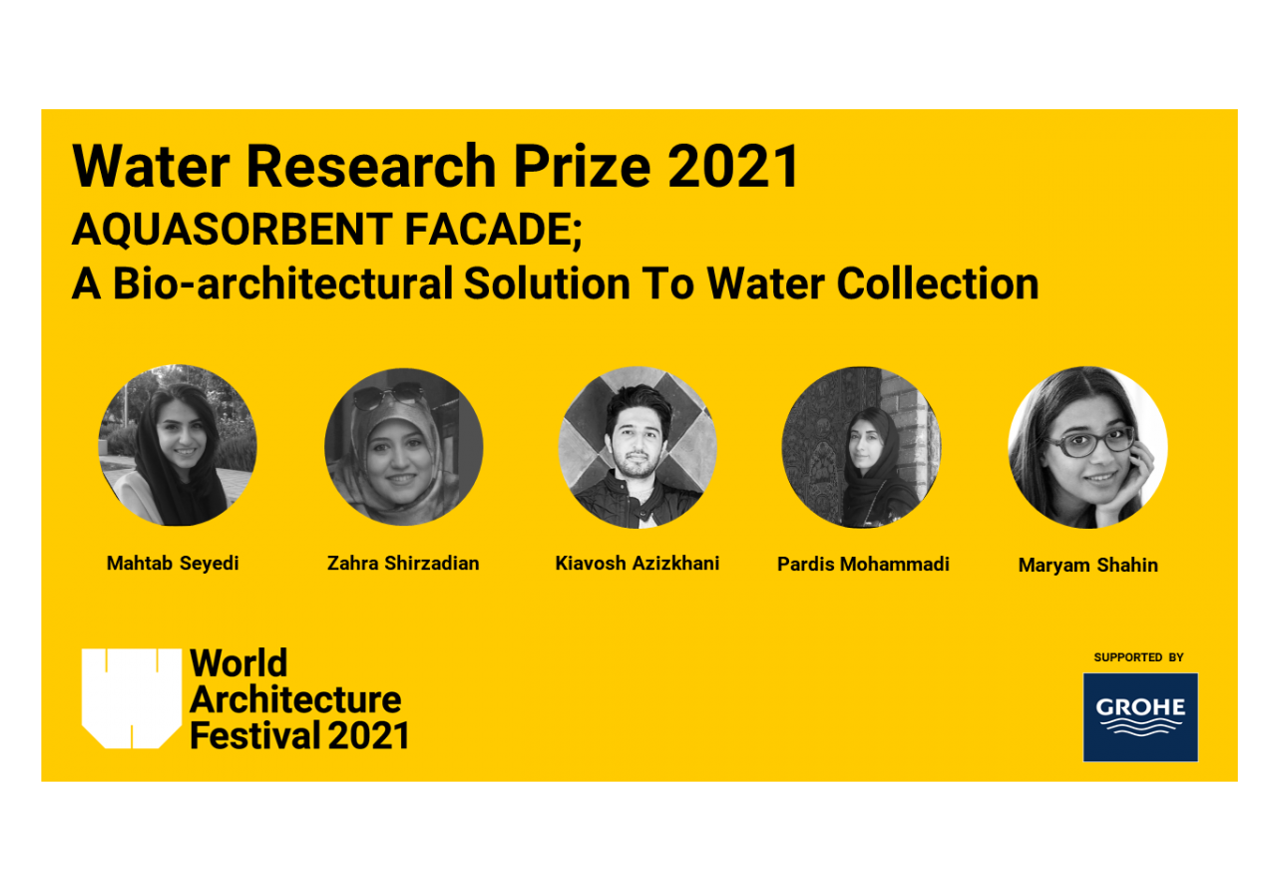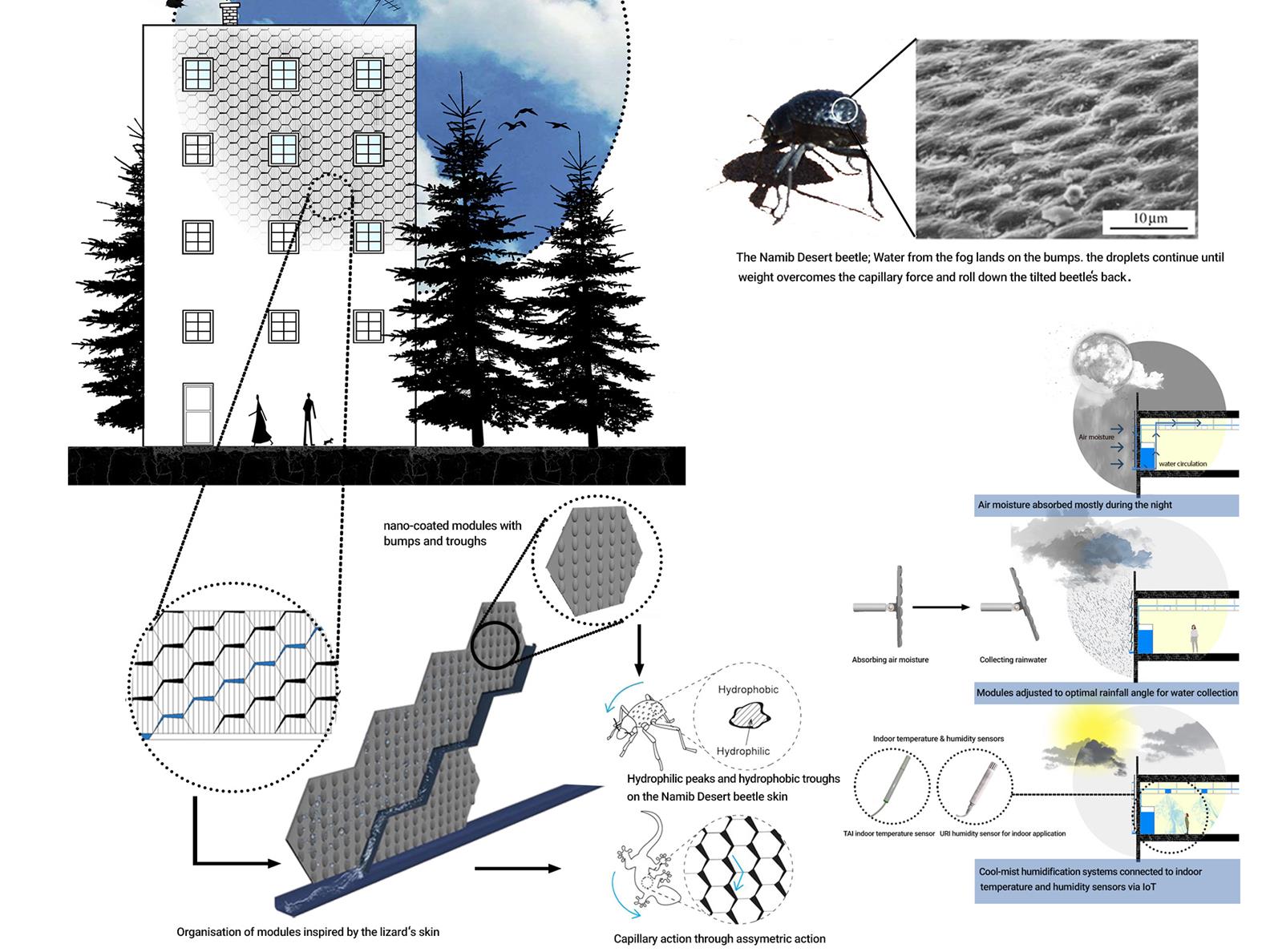Water Research Prize Winner 2021
The Water Research prize is funded by GROHE and is part of the World Architecture Festival annual awards programme. This is the fourth time it has been awarded; other winners have included water filtration, generation and cooling systems in Peru, Brazil and Greece.
“The Water Research Prize enables GROHE to invest in sustainable innovation and first-class thought leadership” says Stefan Schmied, Leader Business Unit Projects, LIXIL EMENA
The Water Research Prize links back to the original WAFX Manifesto, launched in 2017, which identified the key challenges architects will need to address over the coming decade, including climate, energy and carbon; ageing and health; re-use; smart city technology; building technology; cultural identity; ethics and values; power and justice; and virtual worlds. Each entrant is asked to identify a new challenge or opportunity related to design and water, and in doing so advance an understanding of water in relation to the built environment. This year ‘Aquasorbant Façade’ was chosen from a shortlist of ten outstanding projects by a panel of expert judges.

Details of the winning project
This year’s winning project, Aquasorbant Façade, was announced on 30 November 2021. Researchers from Techlab laboratory, based at Shiraz University in Iran, have won the £10,000 research prize to investigate how air humidity and rainfall can be used to aid indoor thermal comfort in arid regions, inspired by water absorption methods observed in the Namib desert beetle.
The winning project uses honeycomb-like modules with peaks and troughs to absorb and retain water molecules in the air, inspired by how air humidity is consumed by desert insects, flora and fauna through their ionic skin and body surfaces. The modules, also designed to best capture rainfall, will guide the water into vertical tanks embedded in the façade. Smart sensors, linked to the tanks, will monitor and record indoor temperature and humidity rates so water can be automatically distributed using cool-mist humidification systems when needed.

Researchers say the prize money will allow them to partner with other research divisions to research and experiment with the very latest digital fabrication methods, materials, and environmental sensors to progress the project. Although designed for regions where precipitation, underground water resources and running water supplies are hard to access, as water scarcity becomes a growing concern globally, its applications can extend to buildings in different climates around the world.
The judges praised the proposal for a variety of reasons: ‘All the judges appreciated the inspiration and application of this nano-technology that could help solve the lack of water in stressed areas of the planet’ says Paul Finch, Director of World Architecture Festival.